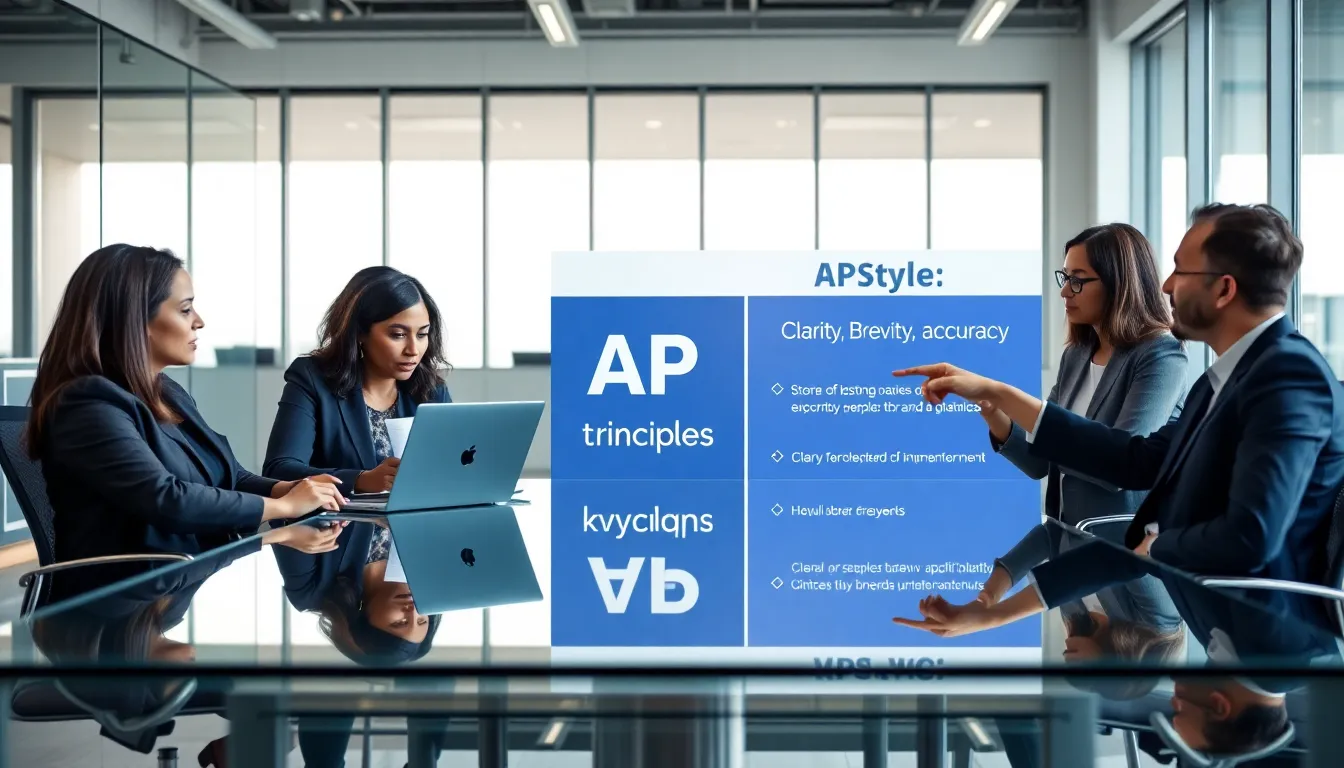Table of Contents
ToggleIf you’ve ever found yourself sweating over whether to capitalize a word in a title or debating the validity of quotes in your headline, you’re not alone. Navigating the waters of AP Style can feel like trying to assemble IKEA furniture without the manual, frustrating yet oddly satisfying once you get it right. AP Style Titles aren’t just for seasoned journalists: they’re crucial for anyone looking to present their writing with clarity and professionalism. Jump into this guide, where nuances become clear and confusion is cast aside.
Understanding AP Style Guidelines

Associated Press (AP) Style is the gold standard for journalistic writing in the U.S. This widely-used format helps maintain consistency in language, making it easier for readers to follow along. At its core, AP Style emphasizes clarity, brevity, and accuracy. For writers, this means adhering to specific guidelines when forming titles. Understanding these foundational principles is essential to grasping everything that follows.
Capitalization Rules
Capitalization in titles follows strict AP Style rules. Generally, the first word of a title, the last word, and all major words in between must be capitalized. What constitutes a major word? Think nouns, pronouns, verbs, adjectives, and adverbs. But, articles like ‘a’, ‘an’, and ‘the’ should be in lowercase unless they are the first or last word. For instance:
- Correct: The Dog Who Knew Too Much
- Incorrect: The dog who Knew too much
This consistency not only enhances professionalism but helps in establishing a recognizable writing style.
Punctuation in Titles
When it comes to punctuation, AP Style includes some notable distinctions that can trip up even seasoned writers. Here’s a breakdown of the key points.
Quotations and Italics
In AP Style, italics are not used for titles. Instead, quotation marks are appropriate for certain works.
When to Use Quotation Marks
Titles of articles, essays, short stories, poems, and songs should be enclosed in quotation marks. For example:
- “The Road Not Taken”
Italics vs. Quotation Marks
AP Style generally reserves italics for longer works, like books and movies, while short works require quotation marks. By following these guidelines, the nuances of written language are respected, leading to clearer communication.
Common Title Formats
Familiarity with the different formats for titles can ease the pain of following AP Style. Here are the main categories and their respective rules:
Titles of Books, Movies, and Works of Art
These are italicized, such as The Great Gatsby or Star Wars.
Article and Website Titles
As mentioned earlier, these require quotation marks, for instance, “10 Tips for Effective Writing”.
Titles of Organizations and Events
These are typically capitalized but do not require punctuation, for example, United Nations or World Series.
Examples of AP Style Titles
To cement understanding, reviewing correct and incorrect examples proves invaluable.
Analyzing Correct and Incorrect Examples
- Correct: “Understanding AP Style Guidelines”
- Incorrect: “understanding AP Style guidelines”
- Correct: Pride and Prejudice
- Incorrect: “Pride and Prejudice”
By using these examples as a guide, writers can refine their skills and improve their ability to adhere to AP Style.
Practical Application in Journalism
In any newsroom, AP Style serves not just as a guideline but as a foundation for delivering clear and impactful news. Journalists often face tight deadlines where clarity is paramount. So, an understanding of AP Style Titles ensures that headlines are not only eye-catching but also informative, setting the tone for the content that follows. This practical application elevates writing and boosts professionalism in every article, report, or press release.







